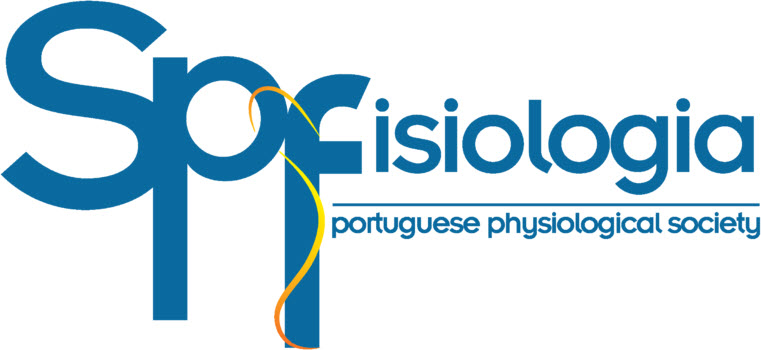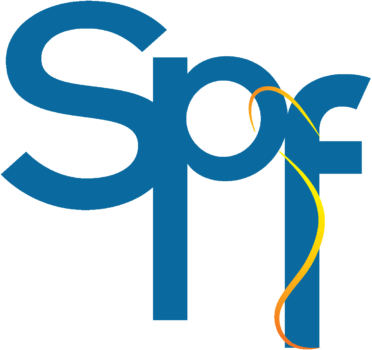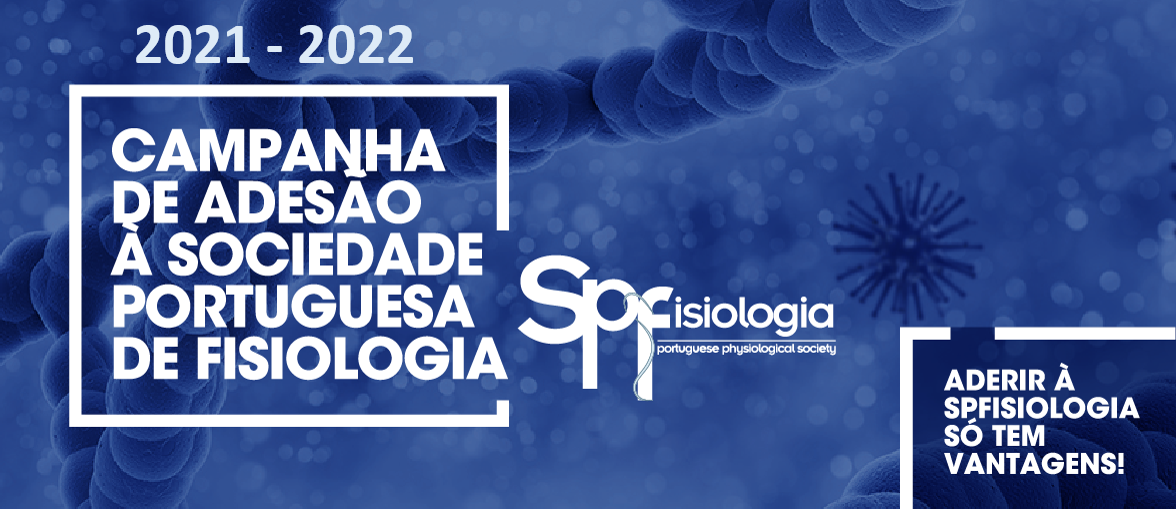Webinars Physiology
TABLE OF CONTENTS
Summary of SpFis Webinars 2021/2022
Summary Table of SpFis Physiology Webinars 2021/2022:
| Name | Slots | Credits Training | Costs ** | |||
| Data* | Non-Member SPF | Members | ||||
| Bases for the Acquisition of Biosignals | Physiological bases of biosignals; “extraction” of information; tricks and applications | 3 | 3 April Edition 1 26 June Issue 2 | FREE up to 10 credits (excess credits 5€ / credit) | 50€ | |
| Measuring Skin Functions quantify “ | barriers”; biomechanics; sonogram structure | 4 | 26/27 April | 30€ | ||
| Exercise and recovery of peripheral perfusion physiotherapy | ; peripheral vascular disease; homehealth | 4 | 10/11 May | 40€ | ||
| Microcirculation – a window for health | Light-tissue interactions; Doppler effect; photo-acoustic applications | 3 | 17/18 May | 30€ | ||
| DXA101 Body Composition Bases | Body Composition; Energy metabolism; Dexa. | 4 | 1 June Edition 1 2 November Edition 2 | 50€ | ||
| Physiological Computing | interfaces person-machine; quantification of the “self”; internet of emotions | 4 | 5 June Edition 1 11 October Edition 2 | 40€ | ||
| Migration – a central process in cell cell physiology | cell migration; cytosquelet; laboratory tests | 2 | 23/24 September | 30€ | ||
| Signal processing with Python | Data analysis; Python-based tools; practical functions and applications 3 | 18 September | 30€ | |||
| Visceral fat: the invisible risk | adipose tissue; overweight and obesity; Dexa. | 4 | 10 December | 50€ | ||
* – The dates indicated may still change.
Become a member of SPFis
And benefit from several advantages with the Campaign of Membership to the Portuguese Society of Physiology.
SpFis Webinars 2021/2022
Webinar Bases for the Acquisition of Biosignals
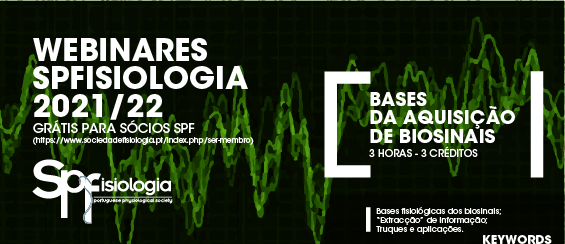
SCOPE AND CONTENTS
Commonly used biosignals; Underlying physiological principles; What information can be extracted from each biosignal; Examples of different applications based on biosignals; Instrumentation and measurement of biosignals; Experimental procedures and recommendations (e.g. noise sources, grounding); Showcase / practice session.
KEYWORD
Physiological bases of biosignals; “extraction” of information; tricks and applications
RECIPIENTS
Undergraduate and undergraduate students; junior researchers and trainees with an interest in biomedical technology.
STRUCTURE AND CALENDAR
Syncr + Assyncr Ed1 – 3 Apr – 9.00-11.0h | Ed 2 26 Jun – 9.00-11.0h
TRAINERS
Hugo Ferreira, MD, MSE, PhD Coord. Engª Biomedica Biofisica (FCUL) IBEB PI – Physics Department (FC) University Lisbon
Hugo Silva, MSE, PhD Pattern and Image Analysis Group PI | IT – Telecommunications Institute (IST – Lisbon University)
Webinar Measure Skin Functions
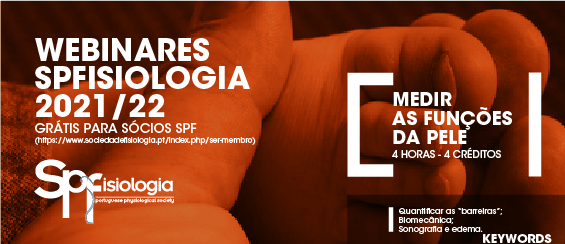
SCOPE AND CONTENTS
Quantification of skin variables by noninvasive means. The skin barriers and the most representative variables of the “barrier” against dessication (TEWL and epidermal water balance) of the physical and chemical “barrier” (melanetic, anti-oxidant and microbiome content) and the mechanical “barrier” (sonographic structure and biomechanical indicators). Transcutaneous variables (microcirculation and blood gas analysis).
KEYWORD
Quantify “barriers”; biomechanics; sonography and edema.
RECIPIENTS
Students, graduates, graduates, researchers (MSc, PhD), interns of specialty (dermatology, reconstructive and cosmetic plastic medicine, others).
STRUCTURE AND CALENDAR
Syncr + Assyncr 26 + 27 Apr 18-20h
TRAINERS
Luis Monteiro Rodrigues, Liliana Tavares Marques, Clemente Rocha, Sergio Andrade, CBIOS PI’s (Modelling Systems Lab) Lusofona University, Lisbon
Webinar Exercise and Recovery of Peripheral Infusion
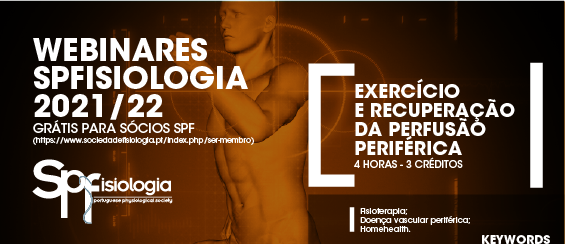
SCOPE AND CONTENTS
Physiotherapy programs (thermotherapy, ultrasound and physical exercise) improve the symptomatology of peripheral arterial disease, sarcopenis and other diseases involving inactivity. However, the individual response is very varied and some of these have an intolerance to exercise. In this sense, the individualization of the exercise is an essential requirement, which implies evaluating and quantifying its impact in each case. Recovery depends heavily on microcirculatory homeostasis and in this sense, we try to provide in this course quick and practical formads to access this information, essential in physiotherapy.
KEYWORDS
physiotherapy; peripheral vascular disease; homehealth
RECIPIENTS
Pre-graduate or post-graduate physiotherapy students, junior researchers (MSc, PhD) (limited to 10 students)
STRUCTURE AND CALENDAR
Syncr + Assyncr Ed1 – 10 and 11 May 17 – 19:30 h
TRAINERS
Margarida Florindo, MSc Physioterapy ESSCVP – Lisbon;
Tiago Atalaia MSc, PhD MovLab/CICANT ULusofona ; ESSCVP (Coord.Physioterapy) Lisbon;
Sergio Nuno, MSc, Physioterapist ESTeSL-IPL, Lisbon.
Microcirculation Webinar - a window to health
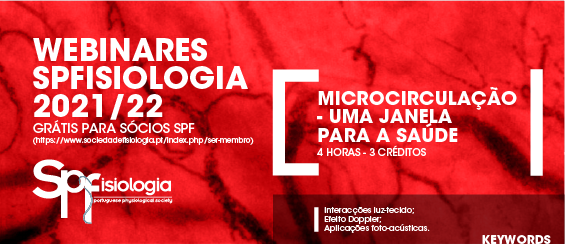
SCOPE AND CONTENTS
Microcirculation of the skin – structure and function. Cardiovascular regulation – interaction between sensors and efactors. Inflammation, Leakage and Endothelial Rarefaction. Consequences of microcirculatory dysfunction.
Noninvasive means of exploitation of in vivo microcirculation. Dynamic studies of microcirculation in research and in clinical environment.
KEYWORDS
Light-tissue interactions; Doppler effect; photo-acoustic applications
RECIPIENTS
Students, graduates or graduates, junior researchers (MSc, PhD) and interns (cardiology, vascular medicine, dermatology, plastic and reconstructive medicine)
STRUCTURE AND CALENDAR
Syncr + Assyncr 17 + 18 May 18 – 20h
TRAINERS
Luis Monteiro Rodrigues, Clemente Rocha, Sergio Andrade, Tiago Granja
CBIOS PI’s (Modelling Systems Lab) Lusofona University, Lisbon
Webinar DEXA 101 - The basics of body composition
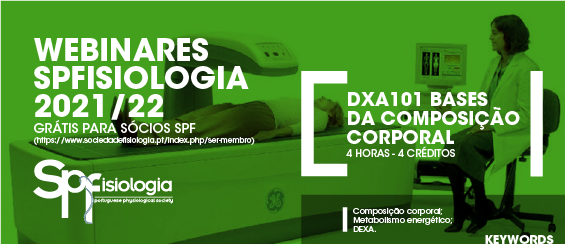
SCOPE AND CONTENTS
Body composition. Energy metabolism. Techniques of evaluation / estimation of body composition: analysis and comparison. Use of DEXA to assess body composition. Body composition in different age groups. Body composition in healthy individual vs. individual with pathology.
KEYWORDS
Body composition; Energy metabolism; Dexa.
RECIPIENTS
Students, graduates, graduates, researchers (MSc, PhD), specialists in body composition (physical exercise technicians, nutritionists, aesthetic medicine, bariatric and endocrinology)
STRUCTURE
Syncr + Assyncr Ed1 – 1 Jun 18:30-20:30| Ed2 2 Nov 18:30-20:30
TRAINERS
Sérgio Faloni, Regina Menezes, Rejane Giacomelli, Emília Alves, Carina Rossoni, Bruno Sousa and, Cíntia Pêgo
CBIOS Nutrition and Public Health Lab, Lusofona University, Lisbon
Physiological Computing Webinar
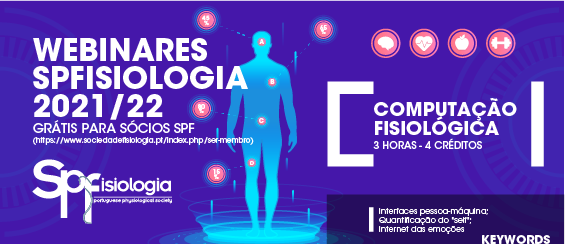
SCOPE AND CONTENTS
Conversations about: Life as computing and physiology as the interaction of “living” algorithms. The physiological-digital interface and the quantification of the I. The frontier of the possible: internet of emotions, brain-computer interfaces and transhumanism.
KEYWORD
Human-machine interaction; living algorithms; trans-humanism
RECIPIENTS
Students, graduates or graduates, researchers and curious about neurosciences, medicine, technology and the future.
STRUCTURE
Syncr + Assyncr Ed1 – 5 Jun 19-20.30h | Ed2 11 Oct/Oct 19-20.30h
TRAINERS
Hugo Ferreira, MD, MSE, PhD Coord. Engª Biomedica Biofisica (FCUL) IBEB PI – Physics Department (FC) University Lisbon
Hugo Silva, MSE, PhD Pattern and Image Analysis Group PI | IT – Telecommunications Institute (IST – Lisbon University )
Webinar Migration: a central process in cell physiology
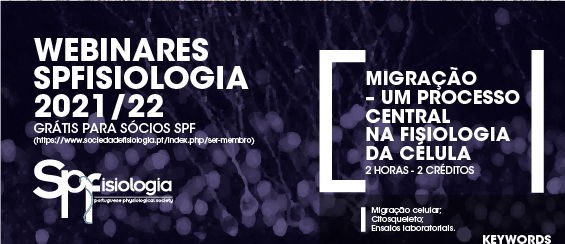
SCOPE AND CONTENTS
Cell migration: concepts and relevance in physiological and pathological processes. Types of cellular migration. Techniques for assessing cell migration. Molecular processes associated with cell motility dynamics: cytoskeleton remodeling and cell-cell and matrix cell adtake. Molecular mechanisms involved. Cellular assays to dissect mechanotransduction processes.
KEYWORDS
Cell migration; cytosquelet; laboratory tests
RECIPIENTS
Graduate or graduate students, junior researchers (MSc, PhD).
STRUCTURE AND CALENDAR
Syncr + Assyncr 23 Sep. + 24 Sep 15-16h
TRAINERS
Ana Sofia Fernandes; Nuno Saraiva, CBIOS PI’s – Pharmacology and Molecular Mechanisms Lab. Lusofona University, Lisbon
Biosignal Processing Webinar with Python
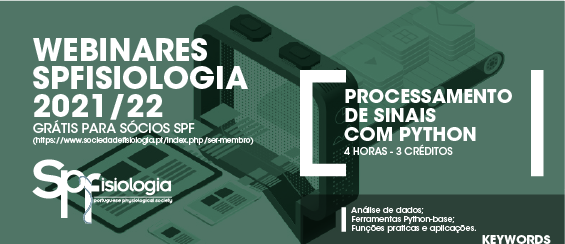
SCOPE AND CONTENTS
Introduction to Python; Base tools; Basic constructs of the programming language; Data types; Flow control and repetition structures; Functions; File input / output; Error handling; Modules; Python for data analysis; Graphics; Numerical manipulation; Showcase / hands-on.
KEYWORDS
Data analysis; Python-based tools; practical functions and applications
RECIPIENTS
Graduate and undergraduate students; Junior researchers and speciality interns with interest in technology biomedical technologies.
STRUCTURE AND CALENDAR
Syncr + Assyncr 18 Set. 9-11am
TRAINERS
Hugo Ferreira, MD, MSE, PhD Coord. Engª Biomedica Biofisica (FCUL) IBEB PI – Physics Department (FC) University Lisbon
Hugo Silva, MSE, PhD Pattern and Image Analysis Group PI | IT – Telecommunications Institute (IST – Lisbon University)
Webinar Visceral Fat - The Invisible Risk
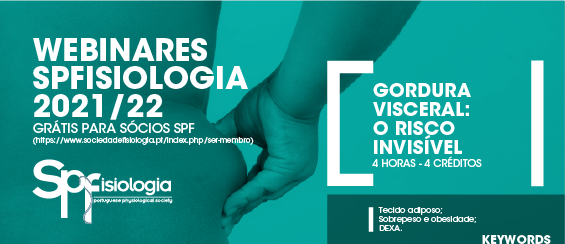
TITLE
Visceral fat: the invisible risk
KEYWORD
adipose tissue; overweight and obesity; Dexa.
SCOPE AND CONTENTS
Adipose tissue – structure and function. Visceral fat – importance and activity.
Obesity – consequences and sequelae. Body composition of overweight and obese individuals.
RECIPIENTS
Students, graduates, graduates, researchers (MSc, PhD), specialists in body composition (physical exercise technicians, nutritionists, aesthetic medicine, bariatric and endocrinology)
STRUCTURE AND CALENDAR
Syncr + Assyncr 10 Ten. 18:30 – 20:30
TRAINERS
Sérgio Faloni, Regina Menezes, Rejane Giacomelli, Emília Alves, Carina Rossoni, Bruno Sousa and Cíntia Pêgo
Agenda (Preliminary)
2021 | 2022 | |||||||||||||||||||||||
| Jan | Feb | sea | apr | Mai | Jun | Jul | Aug | set | Out | Nov | dec | Jan | Feb | sea | apr | Mai | Jun | Jul | Aug | set | Out | Nov | dec |
Bases for the Acquisition of Biosignals |
|
|
| 3 |
| 26 |
|
|
|
|
|
|
|
| * |
|
|
|
|
|
|
|
|
|
Measure Skin Functions |
|
|
| 26-27 |
|
|
|
|
|
|
|
|
|
|
| * |
|
|
|
|
|
|
|
|
Exercise and recovery of peripheral perfusion |
|
|
|
| 10-11 |
|
|
|
|
|
|
| * |
|
|
|
|
|
|
|
|
|
|
|
Microcirculation – a window to health |
|
|
|
| 17-18 |
|
|
|
|
|
|
|
| * |
|
| * |
|
|
|
|
|
|
|
DXA101 Body Composition Bases |
|
|
|
|
| 1 |
|
|
|
| 2 |
|
|
| * |
|
|
|
|
|
|
|
|
|
Physiological Computing |
|
|
|
|
|
| 5 |
|
| 11 |
|
|
| * |
|
|
|
|
|
|
|
|
|
|
Migration – a central process in cell physiology |
|
|
|
|
|
|
|
| 23-24 |
|
|
|
|
|
| * |
|
|
|
|
|
|
|
|
Signal processing with Python |
|
|
|
|
|
|
|
| 18 |
|
|
| * |
|
|
|
|
|
|
|
|
|
|
|
Visceral fat: the invisible risk |
|
|
|
|
|
|
|
|
|
|
| 10 |
|
|
|
|
| * |
|
|
|
|
|
|
These dates can be changed
* to set
